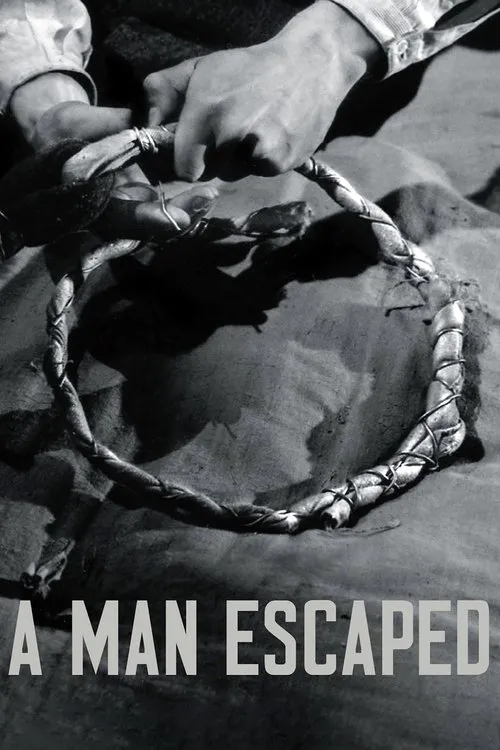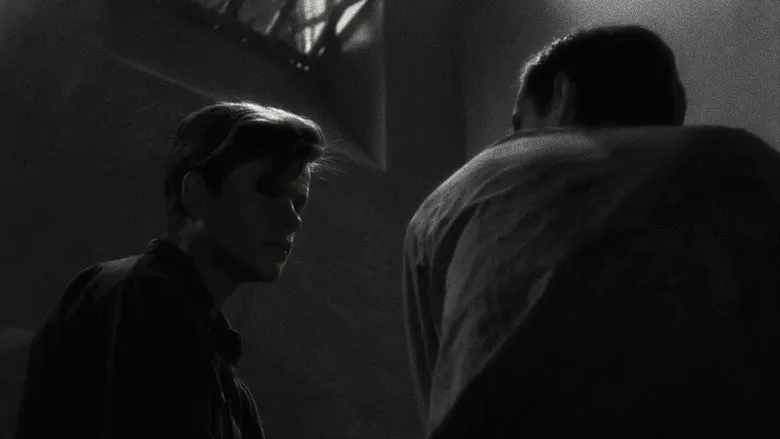A Man Escaped

Plot
Directed by Robert Bresson, "A Man Escaped" is a thought-provoking and emotionally intense portrayal of a French Resistance fighter's desperate struggle for freedom during World War II. The film is based on the memoir "The Notebooks of Prisoner of War 7154" by André Devigny, a member of the French Resistance who managed to escape from a notorious prisoner-of-war camp in Montluc, Lyon. The story revolves around a young Resistance fighter who, like many others, is arrested by the Germans and imprisoned in Montluc. As the reality of his situation sets in, he begins to lose hope, feeling overwhelmed by the seemingly insurmountable odds against him. However, he soon discovers his own resilience and resourcefulness as he becomes determined to escape from the prison. Upon his arrival at Montluc, the protagonist is assigned a bunk number and given a prisoner identification number, 7154. He quickly gets to know the other prisoners, each with their own unique stories and struggles. The inmates are subjected to harsh treatment, facing physical and psychological torture at the hands of their captors, who are determined to break their spirits. As the protagonist navigates the prison's strict rules and rituals, he becomes fascinated with the smallest details, observing the patterns and habits of the guards, the layout of the prison, and the movements of the prisoners. He begins to gather information, piece by piece, waiting for the perfect moment to strike. The film takes its time to build up the tension, focusing on the protagonist's meticulous planning and preparation. One of the most striking aspects of "A Man Escaped" is its use of a non-actor in the lead role, played by François Leterrier, a painter who was chosen by Bresson for his unassuming and quiet demeanor. This decision by Bresson creates a sense of authenticity, as Leterrier's performance adds a raw, unpolished quality to the film. The protagonist's resourcefulness and determination lead him to fashion a series of simple yet effective tools, crafted from the most mundane objects – a spoon, a nail, and a piece of string. These seemingly insignificant items become instrumental in his escape plan. The scene where the protagonist expertly hammers a nail through the wall of his cell, creating a hole to aid in his escape, is a masterclass in minimalist tension. As the protagonist inches closer to his freedom, the stakes grow higher, and the tension becomes almost palpable. One of the most memorable sequences in the film is the carefully choreographed escape, shot in a long, uninterrupted take, as the protagonist slips through the hole and begins his perilous journey to freedom. This is perhaps the most suspenseful and thrilling sequence in the film, as the protagonist, dressed in civilian clothes, must navigate the labyrinthine streets of Lyon without being caught. Throughout "A Man Escaped," Bresson's innovative direction creates an immersive experience, drawing the viewer into the protagonist's world. The black-and-white cinematography, by Marcel Fradely, adds to the sense of realism, capturing the bleak atmosphere and the gritty beauty of the prison. The film is also noteworthy for its exploration of the themes of hope, resilience, and the human spirit. The protagonist's decision to escape, despite the overwhelming odds against him, becomes an act of defiance against the oppressors, a testament to his refusal to surrender. In the end, it is not the dramatic plot twists or the action-packed climax that resonates, but the quiet, subtle moments of courage and determination that make "A Man Escaped" a powerful and poignant masterpiece. Bresson's direction is notable for its restraint, focusing on the simplicity and elegance of the narrative rather than indulging in melodrama or sensationalism. The result is a film that is both understated and deeply moving, one that challenges the viewer to share in the protagonist's journey, to experience the fear, the doubt, and the triumph that accompanies his quest for freedom. In "A Man Escaped," Robert Bresson creates a cinematic tribute to the French Resistance, a celebration of their courage and determination in the face of overwhelming adversity. The film is an unforgettable portrayal of one man's fight for freedom, a testament to the human spirit's capacity to persevere in the most daunting of circumstances.
Reviews
Recommendations





